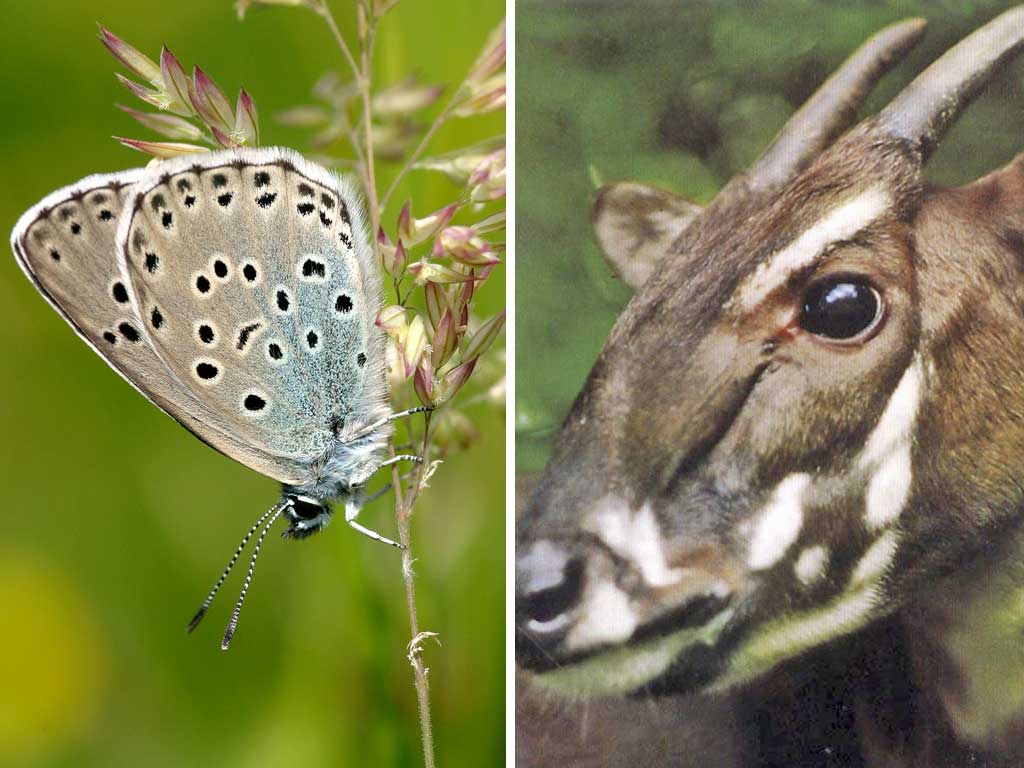Antelope first seen 20 years ago is on brink of extinction

Vietnam's rare mammals may be sliding towards extinction, but Britain's rarest butterfly is going from strength to strength, a series of contrasting announcements makes clear today.
Fears are growing about the future of one of the world's most mysterious animals, the saola, a cross between an ox and an antelope, which was the first large mammal new to science in more than 50 years when it was discovered in Vietnam in 1992. There is also concern about three of the country's six species of gibbon, which are said to be "perilously close to extinction".
On the other hand, a new reserve is being set up for the large blue, the butterfly that went extinct in Britain in 1979, but which has been reintroduced through painstaking conservation work and is now flourishing at a handful of sites in southern England.
The contrasting East-West fortunes of these species say a lot about the different pressures on wildlife in Asia and Europe. Twenty years after its discovery, the saola remains elusive, with no precise estimate of its population, and according to WWF (formerly the World Wide Fund for Nature) there are fears that it could go the way of the Vietnamese rhino – discovered in 1988 and hunted to extinction by last year.
"While they inhabit a very restricted range, there is still no reported sighting of a saola in the wild by a scientist, and the handful of saola taken into captivity have not survived," said Nick Cox, of WWF. "If things are good, there may be a couple of hundred saola out there," said William Robichaud, co-ordinator of the saola working group of the International Union for the Conservation of Nature. "If things are bad, the population could now be down in the tens."
Although development is encroaching on the saola's forest habitat, the greatest threat to the animal comes from illegal hunting. Saola are caught in wire snares set by hunters to catch other animals, such as sambar deer, muntjacs and civets, which are largely destined for the lucrative wildlife trade, driven by traditional medicine demand in China and restaurant and food markets in Vietnam and Laos.
Meanwhile, the first comprehensive study of gibbons in Vietnam in more than a decade has found that three of the six species (the eastern and western black gibbons and the northern white-cheeked gibbon) are close to extinction, and the remaining three have suffered massive population reductions. The report, co-authored by Britain's Fauna and Flora International and Conservation International in the US, details the decline that Vietnam's gibbon species have suffered over the past 10 years. They have disappeared from much of their historical range in the country, and the remaining viable populations are restricted to protected areas, most of which lack the standard of protection needed to ensure their survival.
On the other hand, Britain's once extinct but now reintroduced large blue butterfly is faring so well that the Butterfly Conservation charity has acquired a new reserve to house it. It is at Rough Bank, overlooking the Slad Valley in the Cotswolds. Already home to four species of blue butterflies, the Rough Bank reserve is likely to become a key site for the largest one as it expands into the Cotswolds from its re-introduction base in Somerset's Polden Hills.
Join our commenting forum
Join thought-provoking conversations, follow other Independent readers and see their replies
Comments